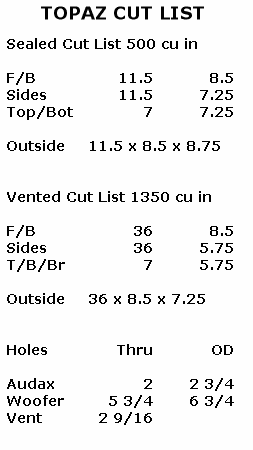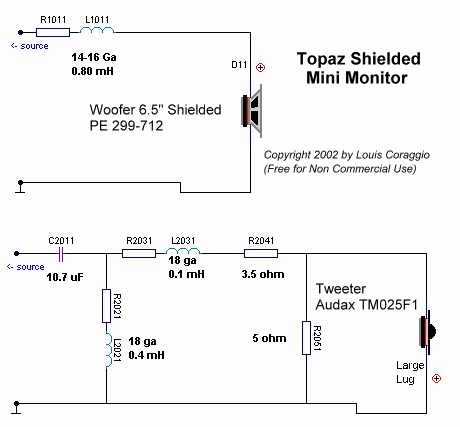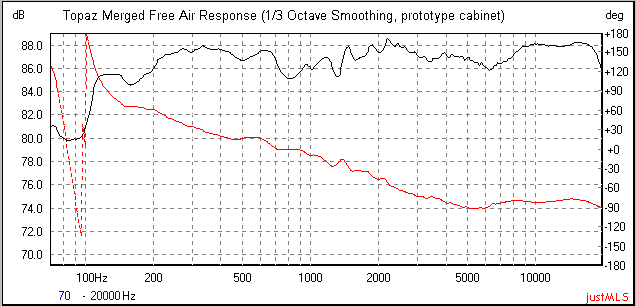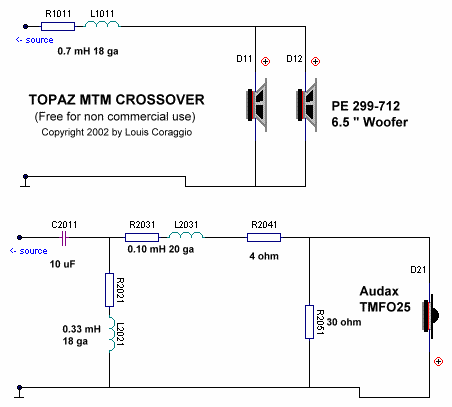|
Revised
Xover for Enhanced Baffle Step (Added 17 July)
After trading
emails with Darren K at PE and extended listening, I decided that the
orginal crossover was just too thin for mains. (Though I may use it for
the center channel). I spent some time with LspCad and came up with a
revised crossover that ups the baffle step compensation to about 5 db.
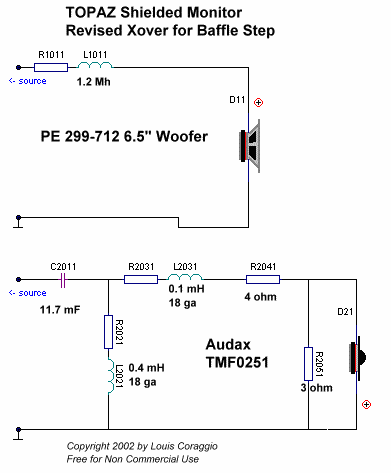 I
had a couple of 14 ga 1.2 mh coils in inventory so I used them as a basis
for the woofer. The major changes on the tweeter network included increasing
the cap to 11.7 mf and revising the LPad. This effectively reduced the
crossover frequency to about 2400 hz. I
had a couple of 14 ga 1.2 mh coils in inventory so I used them as a basis
for the woofer. The major changes on the tweeter network included increasing
the cap to 11.7 mf and revising the LPad. This effectively reduced the
crossover frequency to about 2400 hz.
I was afraid
that these changes would loose that wonderful detail I heard with the
initial design. The revised version pretty much mitigated most of the
thin bottom end but left the high end detail I liked. The mids are now
a bit more laid back, and I picked up a hint of sibilance. Overall I am
now quite pleased with the performance. These are very capable standalone
monitors. Bass heads will probably want a sub. The Topaz should be a fine
HT monitor.
I believe
that this Audax tweeter is the real deal. Very crisp detail, lots of air.
Lovely on vocals and wind instruments. Very clear vocals, virtually no
sibilance, excellent image and soundstage. Decent depth and placement.
|
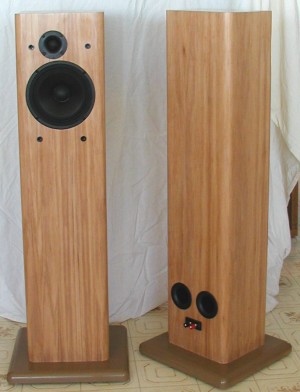
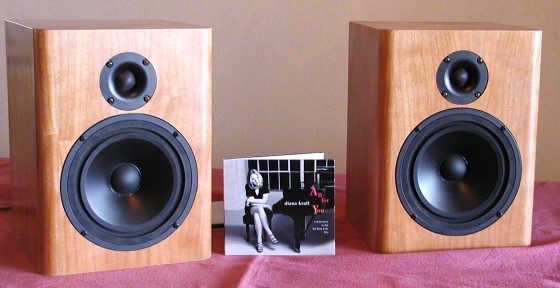

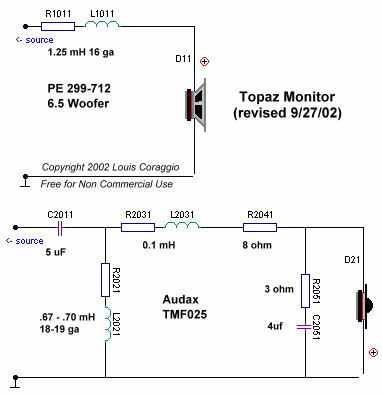 I
used this opportunity to go back and revisit the Topaz design. I wanted
to smooth out the impedance a bit, and see if I could improve the imaging
a bit. After a few hours of dinking I came up with this revision.
I
used this opportunity to go back and revisit the Topaz design. I wanted
to smooth out the impedance a bit, and see if I could improve the imaging
a bit. After a few hours of dinking I came up with this revision.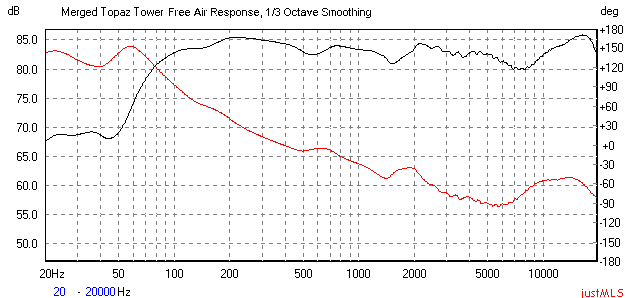
 I
had a couple of 14 ga 1.2 mh coils in inventory so I used them as a basis
for the woofer. The major changes on the tweeter network included increasing
the cap to 11.7 mf and revising the LPad. This effectively reduced the
crossover frequency to about 2400 hz.
I
had a couple of 14 ga 1.2 mh coils in inventory so I used them as a basis
for the woofer. The major changes on the tweeter network included increasing
the cap to 11.7 mf and revising the LPad. This effectively reduced the
crossover frequency to about 2400 hz.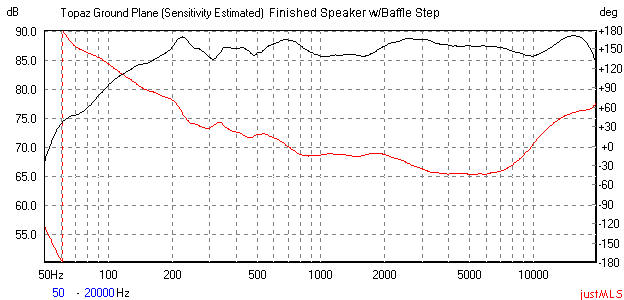
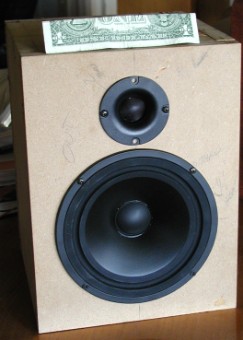
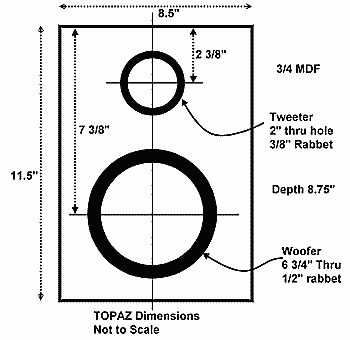
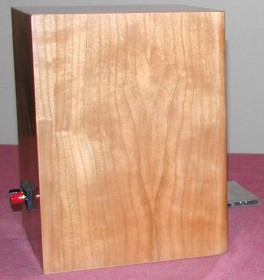 The
construction is fairly straight forward. 3/4 MDF with one small piece
of bracing glued behind the baffle between the drivers. I use biscuits
and clamps exclusively. After sanding the boxes square, I used my 3/4"
radius bit to roundover the two front edges.
The
construction is fairly straight forward. 3/4 MDF with one small piece
of bracing glued behind the baffle between the drivers. I use biscuits
and clamps exclusively. After sanding the boxes square, I used my 3/4"
radius bit to roundover the two front edges. 